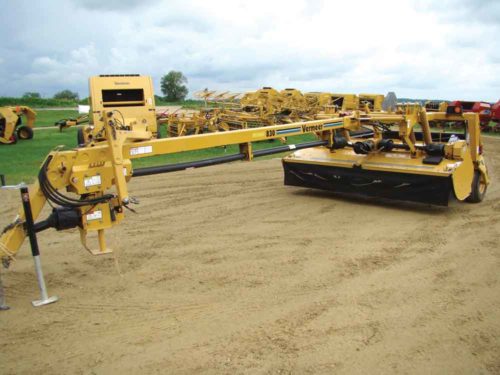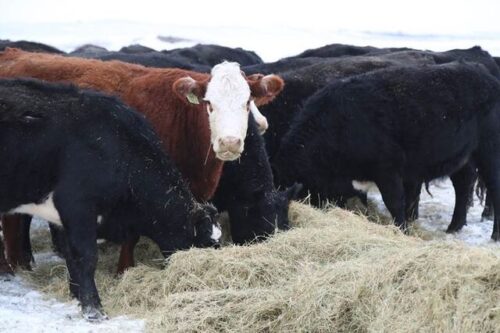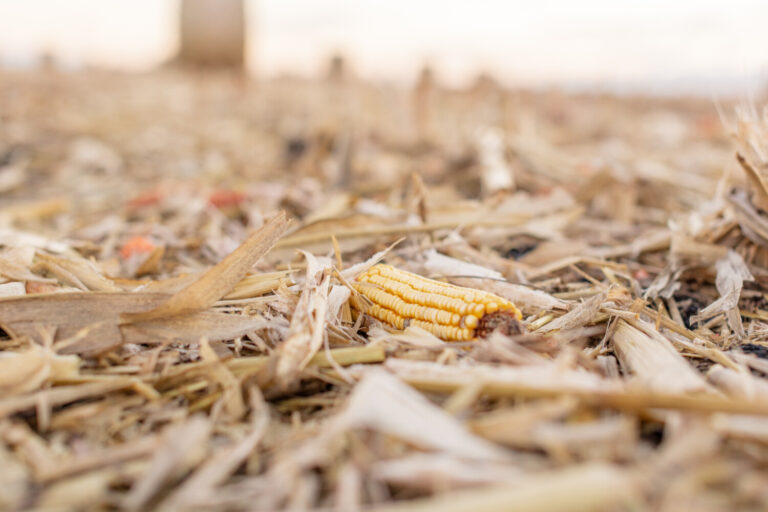
When to Consider if Grazing Cornstalks is the Right Option
August 2023
For cattle producers considering grazing cornstalk residue, knowing what is in the field and on the ground is key to meeting nutritional needs. With a few considerations, cattle producers can utilize residue as a relatively inexpensive forage source.
Calculating Available Forage
Aaron Berger, a University of Nebraska Extension Educator in Kimball, Nebraska, said grazing residue is widely utilized in some regions as a less expensive option than delivering harvested forages. To determine the amount of residue available, producers can divide the bushel yield by 3 to calculate grazing days per acre per cow. For example, 100-bushel corn would provide 30 grazing days for one mature cow and the stocking rate and grazing days can be estimated based on the size of the field.
Mature cows in good condition — a body condition score of 5 or greater — won’t need significant protein supplementation on corn stalks especially if they are spring calving cows. Berger said other classes of cattle, like bred heifers or fall calving cows will need additional protein and energy supplementation while grazing corn residue.
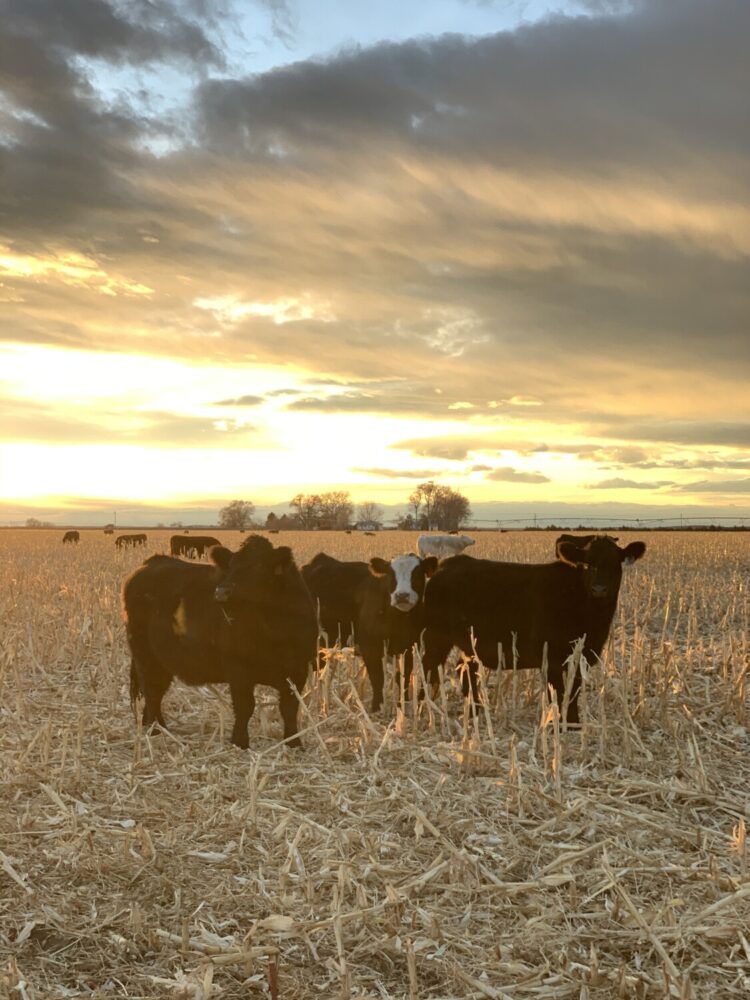
Grazing Residue in Drought-stricken Areas
In areas affected by drought, Berger said it’s important to recognize the potential for high nitrates in the field. These areas include dryland acres but can also include irrigated acres in corners and edges where plants are stressed. Drought conditions can prevent normal plant growth, resulting in nitrate accumulation in the stalk and lower portions of the plant. Nitrates outcompete oxygen in an animal’s hemoglobin, often resulting in suffocation and death. Nitrate tests are widely available and can be a low-cost measure to prevent potential nitrate poisoning. Samples should be gathered from various locations within the field. When sampling, mix the grab-samples and subsample an amount from the mix to fill a resealable plastic bag. Samples should be frozen when in storage.
Grazing cows will select and eat the grain first, followed by the husk and leaf before the cob and stalk. Berger said cows grazing dryland corn with stunted or failed plants, will often prefer the drought-stressed plants that often contain high nitrates. Dry cows, he explained, will maintain or increase body weight on residue grazing programs when grain, husks and leaves are available. Berger warns against leaving cows grazing cornstalks longer than normal to stretch feed resources, forcing the cows to eat the cobs and stalks.
Avoiding Acidosis
Corn that has been toppled by wind or experienced hail damage with ears on the ground can also be a consideration and requires estimating the amount of corn on the ground to manage access to the grain.
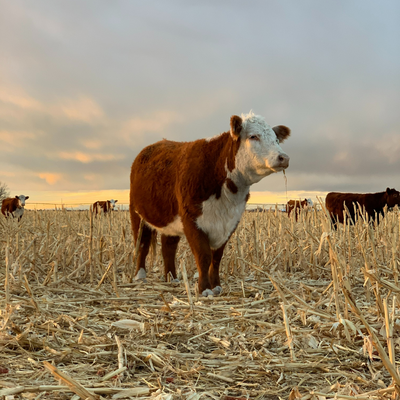
“If there is more than about 2 – 3 bushels per acre, you need to think about some kind of strategy for limiting access to the corn or we can run into issues with grain overload that can cause acidosis,” Berger said.
Strip grazing can be advantageous and can be done using electric fence or timed access, where cows are allowed access to graze for a certain amount of time before they are returned to a dry lot. Providing bloat blocks containing poloxalene can also be helpful.
“There’s a lot of different ways that can be done, but it’s really about controlling the amount of grain they get,” he said. “I tell people if they have that much corn on the ground, they can think about it like you would a feed bunk. We’re talking about bunk management in terms of how much corn they have access to. Using a supplement like Rumensin to control acidosis can also be part of a plan.”
Access to water is always a consideration for cattle producers and can often be a challenge on residue fields. Berger warns that nurse tanks used to haul water should be clean and never used for fertilizer or other chemicals.
Calving on Cornstalks
Calving on corn stalks can be a good alternative to a dry lot in terms of calving on clean ground. However, most spring calving herds calve when corn residue quality has declined through the winter. Berger said producers can’t depend upon the late winter or early spring residue quality to be high enough to support cows without supplementation, but the clean ground conditions can be beneficial. He said producers calving on residue should plan on supplementing spring calving cows in early stages of lactation.
“Her nutrient requirements are going to be very high so I wouldn’t plan to get more than about 25% of the roughage she’ll eat from the residue,” he said. “The balance of their diet needs to be a high quality, energy- and protein-dense diet. Something like distillers grain with high quality hay or silage is going to be necessary to make up the difference to meet the nutrient requirements of the cows.”
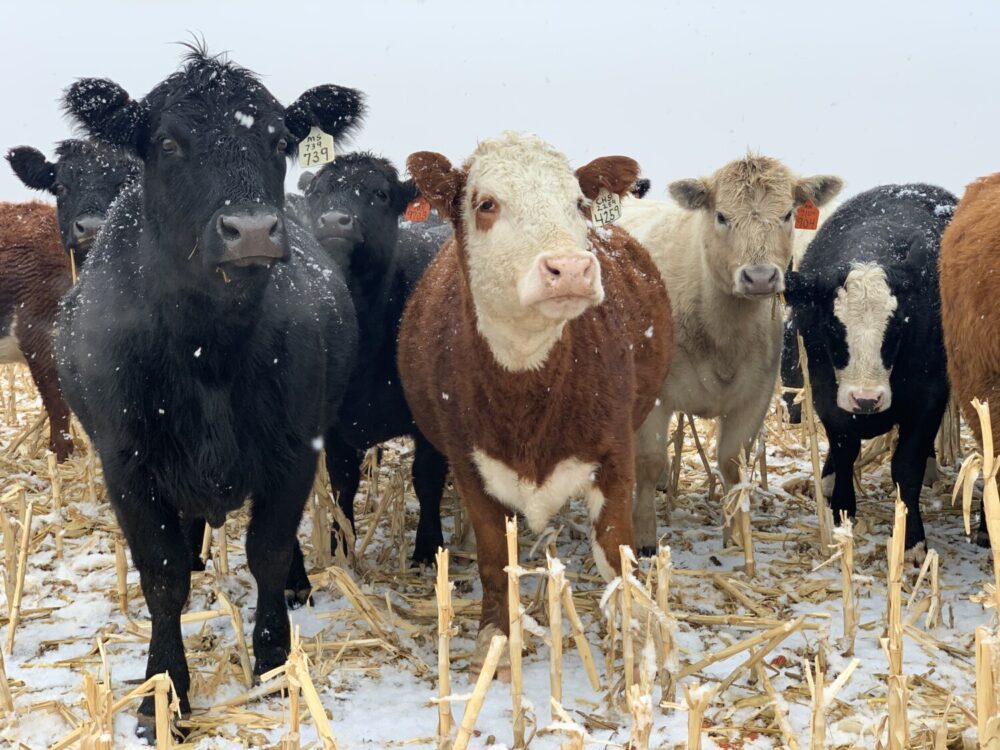
Some producers utilize corn residue for weaned calves. Berger said calves with a targeted gain of 1 lb (.45 kg) per day require an energy and protein supplement. Based on UNL research, this targeted gain can typically be met by feeding dried distiller grains at 2 lb (.90 kg) per day.
Weather
Berger said the quality of the corn residue is highest following harvest and decreases with time. Cows can graze residue with 4 in to 6 in (10 cm to 15 cm.) of snow but cannot graze ice-covered fields. Cool and dry conditions in the fall and winter allow for a longer period of quality forage compared to muddy or warm conditions. Wind can also affect the days of grazing by removing leaves and dry matter.
Determining the available residue and calculating necessary supplementation to efficiently utilize residue can be beneficial to both cattle and corn producers by offering a fall and winter forage and leaving fields cleaner to reduce volunteer plants. For more information about testing or calculating available grazing days, contact your local extension office or your Vermeer dealer.
Information noted above was gathered from a third party who was advised his/her experience might be featured in marketing materials. This article contains third-party observations, advice or experiences that do not necessarily reflect the opinions of Vermeer Corporation, its affiliates or its dealers. Individual results may vary based on care and operation of machine and crop and field conditions, which may adversely affect performance.
Vermeer and the Vermeer logo are trademarks of Vermeer Manufacturing Company in the U.S. and/or other countries.
© 2023 Vermeer Corporation. All Rights Reserved.

